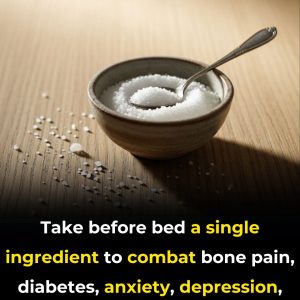
In this article, we uncover the hidden danger of Peripheral Arterial Disease (PAD) – a serious condition where fatty deposits (plaque) build up in your leg arteries, reducing blood flow to your legs and feet. You’ll learn about the 10 warning signs that most people miss, why this condition affects 12% to 20% of Americans over 60 (and nearly 50% of those 85 and older), and crucial steps you can take to protect your arterial health.
Why PAD Is So Dangerous

PAD is more than just leg pain—it’s a sign of widespread atherosclerosis, where plaque narrows arteries and restricts blood flow. This plaque buildup makes vessel walls stiff and reduces circulation to the legs. Even worse, these deposits can form blood clots that block arteries completely. If a clot travels to the heart, it can trigger a heart attack; if it reaches the brain, it can cause a stroke.
Other causes of PAD include:
- Vasculitis (blood vessel inflammation)
- Physical trauma (fractures, surgeries)
- Radiation exposure (such as during cancer treatments)
- Congenital abnormalities in blood vessel formation
Key Risk Factors That Multiply Your Danger
Certain lifestyle habits and medical conditions dramatically increase your risk of PAD:
- Smoking – the most dangerous factor, increasing risk by 400%
- Diabetes (Type 2 especially)
- High blood pressure and abnormal cholesterol
- Chronic kidney disease
- Family history of cardiovascular disease
- Age – risk rises sharply after 65
The 10 Silent Warning Signs of PAD

- Intermittent Claudication (Leg Pain on Activity)
Pain or cramping during walking or climbing stairs that stops with rest. - Persistent Leg Numbness and Weakness
A constant sensation indicating poor blood supply to muscles. - Temperature Differences Between Legs
One leg feeling colder than the other is a sign of poor circulation. - Skin Changes
Shiny, pale, bluish, or purplish skin that signals insufficient blood flow. - Hair Loss on Feet and Legs
Reduced circulation prevents normal hair growth. - Changes in Toenails
Brittle, slow-growing nails point to blood flow problems. - Non-Healing Sores on Feet or Legs
Ulcers that won’t heal may lead to severe complications like gangrene. - Weak or Absent Pulses in Feet and Ankles
A key sign detected during medical exams. - Pain at Rest (Burning Sensation in Feet)
Pain even without activity, often worsening at night, signals severe PAD. - Erectile Dysfunction (Especially in Men with Diabetes)
A warning of restricted blood flow throughout the body.
Note: PAD is often symptomless in its early stages. If you notice even one sign, especially with risk factors like smoking or diabetes, seek medical evaluation immediately.
Diagnosis: How Doctors Detect PAD

The first step is a physical exam to check pulses, skin changes, and blood flow sounds. The most important test is the Ankle-Brachial Index (ABI), comparing blood pressure in your ankles to your arms. Lower ankle pressure confirms PAD. When necessary, doctors use advanced imaging like ultrasound or angiography to pinpoint blockages.
How to Reverse PAD Naturally
1. Exercise Regularly
Walking, cycling, and swimming improve circulation. Begin with interval walking—alternating walking and rest. Just 30 minutes a day can make a dramatic difference.
2. Adopt an Anti-Inflammatory Diet

Your diet can act as medicine. Focus on:
- Colorful vegetables and fruits (rich in antioxidants)
- Healthy fats (olive oil, avocado oil, fatty fish like salmon)
- Omega-3 fatty acids to reduce plaque buildup and inflammation
- Fermented foods (kefir, natto, sauerkraut) for vitamin K2, which prevents arterial calcification
- Spices like turmeric and garlic to improve circulation
Avoid ultra-processed foods, sugary drinks, refined grains, industrial seed oils, and processed meats—they promote inflammation and arterial damage.
3. Quit Smoking
The single most powerful step you can take.
4. Manage Weight, Blood Pressure, and Cholesterol

Work closely with your doctor to control risk factors.
5. Consider Medical Support
In some cases, medications or procedures may be necessary to improve circulation and prevent clotting.
Conclusion: Take Action Now
Peripheral Arterial Disease is a silent threat—but it’s not inevitable. Every healthy choice you make—every step you take—starts healing your arteries today. Don’t wait for severe symptoms to appear. If you’re at risk, talk to your doctor, get tested, and adopt artery-protective habits now.




